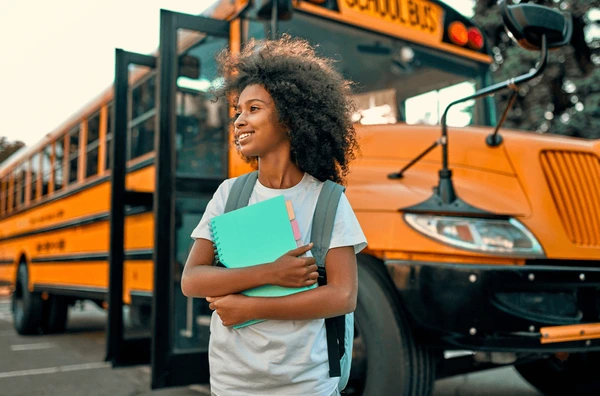I remember one of the first lessons I ever taught. I had the content down cold—but the students? Zoned out within ten minutes. That’s when I realized something crucial: knowing what to teach isn’t enough—you have to know how to teach it.
That’s where instructional strategies come in. These are the deliberate tools teachers use to guide learning, boost engagement, and make lessons stick. And when used intentionally, they completely transform classrooms—from passive and quiet to curious, collaborative, and full of energy.
Let’s dig into what instructional strategies are, why they matter, and which ones can make a real difference in student learning.
🧠 What Are Instructional Strategies?

Instructional strategies are structured teaching methods that help students grasp content, practice skills, and apply their knowledge. These techniques can be adapted to fit grade level, subject, and learning goals, and they’re designed to:
-
Promote active learning
-
Support student engagement
-
Build critical thinking and collaboration
-
Cater to diverse learning needs
They’re more than “tips and tricks”—they’re the foundation of effective, responsive teaching.
🎯 Why Instructional Strategies Matter in Schools
When schools prioritize strategic teaching, here’s what happens:
-
Students become more involved in their learning
-
Teachers can reach learners at all levels
-
Classrooms become more inclusive and student-centered
-
Assessment becomes ongoing and actionable
-
Learning becomes memorable and meaningful
Good strategies create structure, but they also leave space for creativity and connection.
🧩 Effective Instructional Strategies to Use Right Now
1. Explicit Instruction
Best for introducing new material.
How it works:
Teachers clearly model and explain the concept step-by-step before students practice.
✅ Great for: math skills, grammar rules, science procedures
👩🏫 Tip: Pair this with checks for understanding at each step
2. Cooperative Learning
Get students working together with purpose.
Examples include:
-
Think-Pair-Share
-
Jigsaw activities
-
Group problem-solving challenges
✅ Great for: building social skills, engagement, and retention
📣 Bonus: introverts often participate more in pairs before sharing with the class
3. Differentiated Instruction
Recognize that students learn in different ways and at different speeds.
How to do it:
-
Adjust content (readings at different levels)
-
Adjust process (hands-on vs. written work)
-
Adjust product (presentation vs. essay)
✅ Great for: mixed-ability classrooms, inclusion settings
🎯 Key: Set the same learning goal, but allow different paths to get there
4. Socratic Questioning
Fuel deep thinking with open-ended questions that don’t have just one right answer.
Use it to:
-
Explore perspectives
-
Break down arguments
-
Promote reflective discussion
✅ Great for: ELA, social studies, ethics, science discussions
🧠 Phrase starters: “What evidence supports that?” “What else might be true?”
5. Formative Assessment
Check in frequently—not just at the end of the unit.
Quick ways to assess on the fly:
-
Exit tickets
-
Mini whiteboard answers
-
Online polls (Kahoot, Mentimeter, Quizizz)
✅ Great for: immediate feedback, adjusting instruction in real time
📊 Bonus: students see how they’re progressing and where to grow
6. Graphic Organizers
Visual tools help students organize thoughts and content.
Types include:
-
Venn diagrams
-
Story maps
-
Cause-and-effect charts
-
Concept webs
✅ Great for: ELLs, visual learners, and abstract topics
🧾 Use during reading, writing, or note-taking to scaffold deeper thinking
7. Scaffolding
Break big tasks into smaller, more manageable pieces—and gradually release support.
Scaffold by:
-
Modeling first, then guiding, then letting go
-
Providing sentence starters, question stems, or checklists
-
Using guided practice before independent work
✅ Great for: skill development, writing tasks, long-term projects
🔑 Remember: scaffolding isn’t forever—it’s a support bridge
🏫 Schoolwide Implementation Tips
You don’t have to revamp the whole system at once. But if you’re a school leader or instructional coach, start here:
-
Offer professional development focused on 1–2 strategies per semester
-
Build instructional rounds or peer observations to see strategies in action
-
Encourage collaborative planning time for teachers to try new techniques
-
Collect data on student engagement and achievement tied to strategy use
Even small changes in delivery methods can create a big impact.
✅ Final Thoughts: Strategy Turns Teaching Into Impact
The best lessons I’ve ever seen weren’t necessarily the flashiest. They were structured, thoughtful, and made room for student voices and understanding to unfold.
Instructional strategies help teachers make that happen. They’re how we move from covering material to cultivating minds.
Whether you’re planning tomorrow’s lesson or rethinking a whole curriculum, remember: how you teach is just as important as what you teach. Strategy is the key to engagement, equity, and lasting learning.

